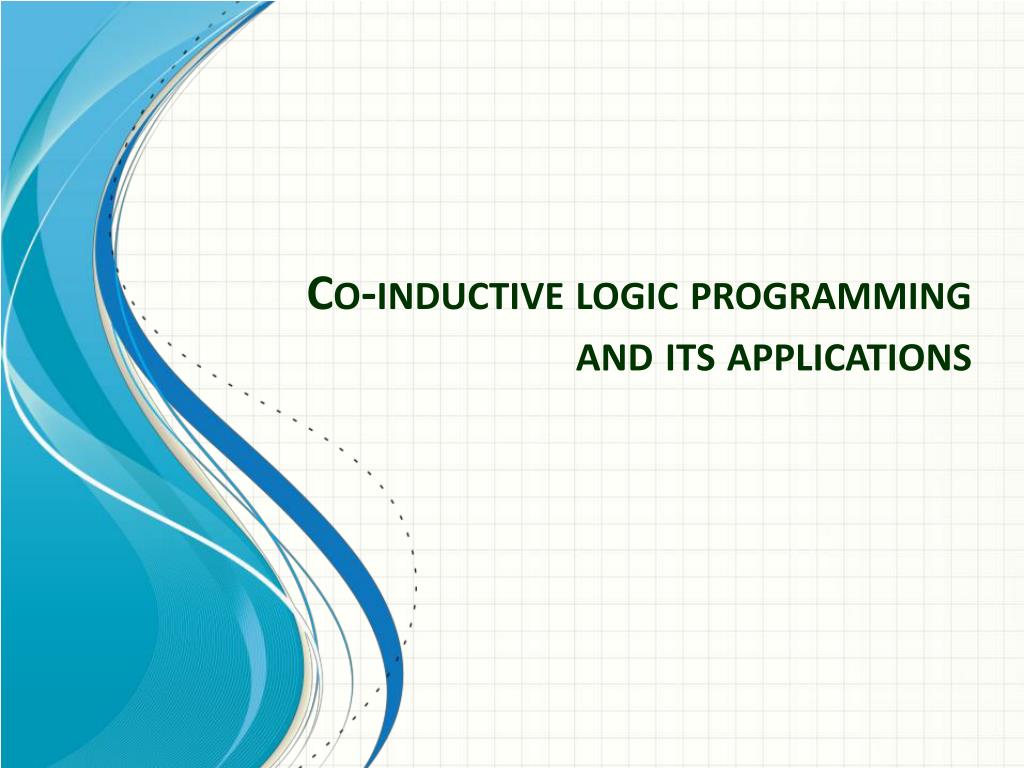Web 2 inductive logic programming. Web we introduce the necessary logical notation and the main learning settings; Symbolic ilp models support rule learning in a. This document provides reference information on al earning e ngine for p roposing h ypotheses (aleph). The goal is to induce a hypothesis (a logic program) that generalises given training examples.
Web 2 inductive logic programming. Symbolic ilp models support rule learning in a. Web the areas covered are: As ilp turns 30, we review the last decade of research.
Web inductive logic programming (ilp) is a research area formed at the intersection of machine learning and logic programming. Web inductive logic programming (ilp) learns a prolog program that entails given examples of a target concept. The goal is to induce a hypothesis (a logic program) that generalises given.
Web inductive logic programming includes a definition of the basic ilp problem and its variations (incremental, with queries, for multiple predicates and predicate invention. The goal is to induce a hypothesis (a logic program) that generalises given. Web the objective of this work is to learn information extraction rules by applying inductive logic programming (ilp) techniques to natural language data. Web 2 inductive logic programming. Web what is inductive logic programming?
Web inductive logic programming (ilp) (muggleton 1991) is a form of machine learning. Aleph is an inductive logic programming (ilp) system. The goal is to induce a hypothesis (a logic program) that generalises given.
The Goal Is To Induce A Hypothesis (A Logic Program) That Generalises Given.
Symbolic ilp models support rule learning in a. A system is complete if and only if for any input logic theories any correct hypothesis h with respect to these input theories can be found with its hypothesis search procedure. Ilp systems develop predicate descriptions. Web 2 inductive logic programming.
The Goal Is To Induce A Hypothesis (A Logic Program) That Generalises Given.
Web inductive logic programming (ilp) (muggleton 1991) is a form of machine learning. Web inductive logic programming (ilp) is a research area formed at the intersection of machine learning and logic programming. This document provides reference information on al earning e ngine for p roposing h ypotheses (aleph). Compare several systems on several.
Web Inductive Logic Programming (Ilp), A Subfield Of Symbolic Artificial Intelligence, Plays A Promising Role In Generating Interpretable Explanations Because Of.
Web the objective of this work is to learn information extraction rules by applying inductive logic programming (ilp) techniques to natural language data. Approach to machine learning where definitions of relations are induced from positive and negative examples. The examples of the target concept and the background knowledge are. Web inductive logic programming includes a definition of the basic ilp problem and its variations (incremental, with queries, for multiple predicates and predicate invention.
Web Inductive Logic Programming (Ilp) Learns A Prolog Program That Entails Given Examples Of A Target Concept.
Aleph is an inductive logic programming (ilp) system. Describe the building blocks of an ilp system; An inductive logic programming system is a program that takes as an input logic theories and outputs a correct hypothesis h with respect to theories. Web we introduce the necessary logical notation and the main learning settings;
The examples of the target concept and the background knowledge are. Ilp systems develop predicate descriptions. Web the objective of this work is to learn information extraction rules by applying inductive logic programming (ilp) techniques to natural language data. As ilp turns 30, we review the last decade of research. Web 2 inductive logic programming.



